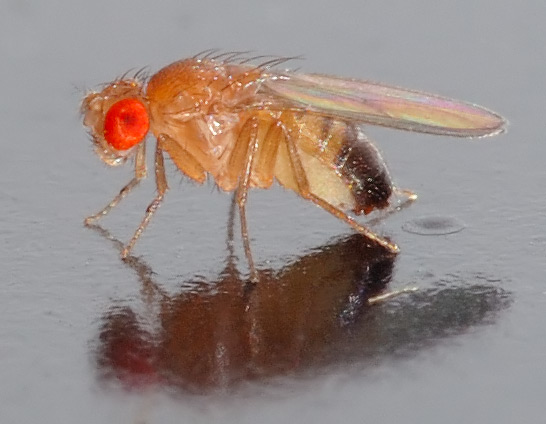Recently i wrote a short story involving the Draco constellation, some ancient astronomers and a type of ant common in this region, called Cataglyphis Nodus.
The Cataglyphis Nodus is blessed with having a name consisting of one Greek and one Latin term. Cataglyphis means cavity-creator. Nodus has the meaning of bond or knot.
The fourth star of the Draco constellation is called Nodus Secundus (Second bond). The story was about a man lost in his imagination.
However this thread is just about posting the strangest/ugliest/most intimidating, or just local insects
Here is the Cataglyphis Nodus, which is a type of mostly red ant:

It is one of the commonest types of ants in the rural areas of Macedonia (probably southern Greece too), along with the all-black, smaller ant. This red ant is capable of biting quite hard, at least as much that its bite will be surely felt. It is not dangerous however, and although it does behave agressively if it senses something near it, it can do no harm to a human in almost any circumstance (well you wouldn't want to let a number of them climb to your eye though ). The Cataglyphis is a very impressive runner and climber, and can easily move upwards rapidly on a human body.
). The Cataglyphis is a very impressive runner and climber, and can easily move upwards rapidly on a human body.
I will find more insects to post later
The Cataglyphis Nodus is blessed with having a name consisting of one Greek and one Latin term. Cataglyphis means cavity-creator. Nodus has the meaning of bond or knot.
The fourth star of the Draco constellation is called Nodus Secundus (Second bond). The story was about a man lost in his imagination.
However this thread is just about posting the strangest/ugliest/most intimidating, or just local insects

Here is the Cataglyphis Nodus, which is a type of mostly red ant:

It is one of the commonest types of ants in the rural areas of Macedonia (probably southern Greece too), along with the all-black, smaller ant. This red ant is capable of biting quite hard, at least as much that its bite will be surely felt. It is not dangerous however, and although it does behave agressively if it senses something near it, it can do no harm to a human in almost any circumstance (well you wouldn't want to let a number of them climb to your eye though
 ). The Cataglyphis is a very impressive runner and climber, and can easily move upwards rapidly on a human body.
). The Cataglyphis is a very impressive runner and climber, and can easily move upwards rapidly on a human body.I will find more insects to post later







 , which means "container of a dead being".
, which means "container of a dead being".


